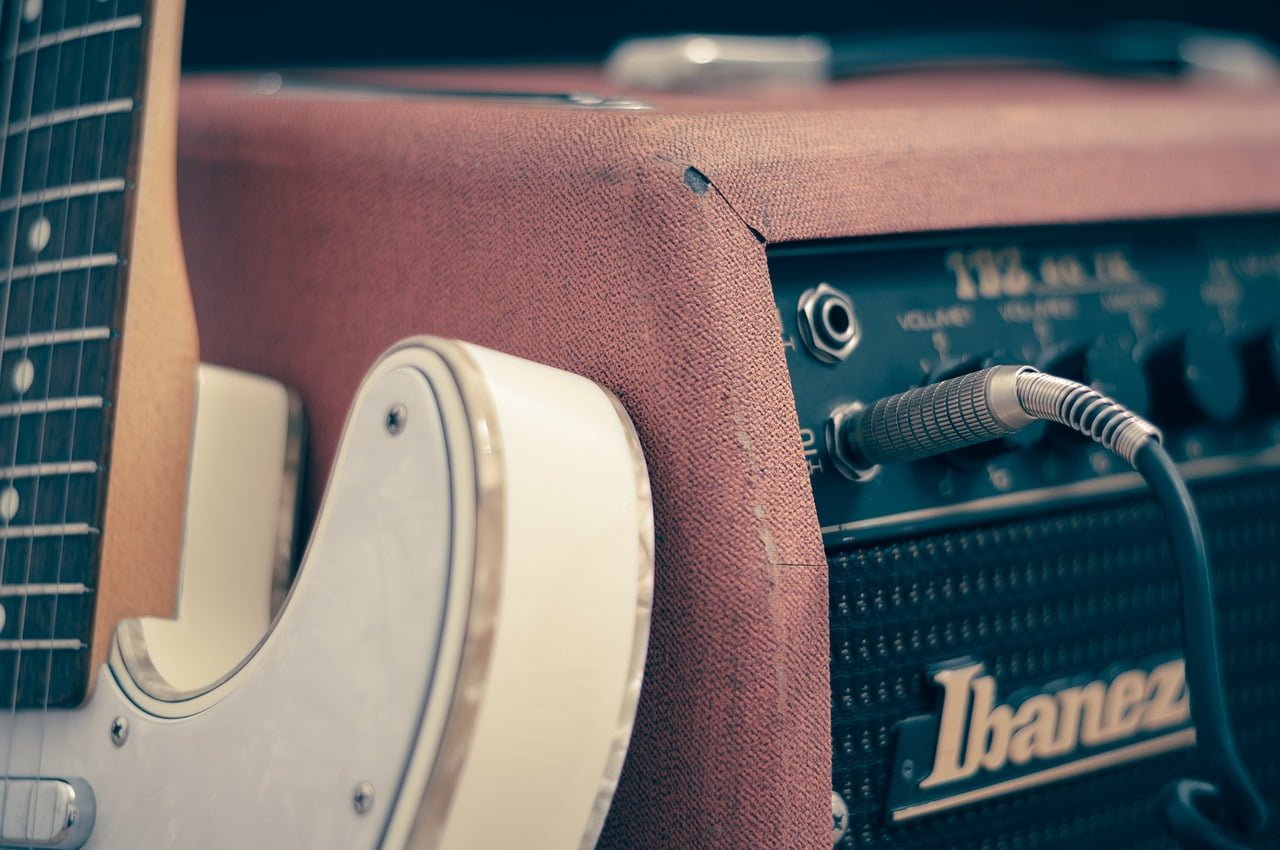Recording Electric Guitars: Amp Miking Vs. Direct Recording
Are you pumped up to take your electric guitar recordings to a whole new level? Awesome! Today, we're going to dive into the exciting world of amp miking versus direct recording techniques. We'll uncover the good and the not-so-good aspects of each method so that you can make a smart decision for your project. Say goodbye to mediocre sound and hello to a studio experience that will blow your mind! Let's get this party started!
We are supported by our audience. When you purchase through links on our site, we may earn an affiliate commission, at no extra cost for you. Learn more.
So, picture this: you're in the studio, ready to lay down some killer guitar tracks. You've got two options: amp miking or direct recording. It's like having two different paths to sonic glory.
Let's start with amp miking. Imagine capturing the raw power of your amp as it belts out those fiery riffs. It's like standing in front of a roaring lion, feeling the vibrations in your chest. Amp miking gives you that organic, in-your-face sound that can make your recordings come alive. It's like having a front-row seat at a rock concert, where you can feel every note coursing through your veins.
But wait, there's a catch. Amp miking can also come with some downsides. Think about all the variables at play – mic placement, room acoustics, and even the type of mic you use. It's like a delicate balancing act, where one wrong move can throw off the entire sound. Plus, if you're recording in a less-than-ideal environment, you might end up with unwanted background noise that will make your head spin.
Now, let's shift gears and talk about direct recording. This method is like having a shortcut to sonic perfection. You bypass the whole mic placement hassle and plug your guitar straight into the audio interface. It's like taking a direct flight to your destination instead of dealing with layovers and delays. With direct recording, you get a clean, pristine sound that can be a blank canvas for your creativity. It's like starting with a fresh, untouched piece of paper, ready to be filled with your musical ideas.
But hold on a second. Direct recording has its own set of trade-offs. While it can give you a crystal-clear sound, it might lack that certain "oomph" and character that amp miking provides. It's like having a beautifully polished diamond, but missing that rough, uncut edge that gives it personality.
So, which path should you choose? Well, it all comes down to what you're looking to achieve. Are you chasing that raw, gritty vibe? Or do you prefer a clean, precise sound? There's no right or wrong answer here, my friend. It's all about finding what works best for your unique style and vision.
In conclusion, amp miking and direct recording are two incredible techniques that can elevate your electric guitar recordings to new heights. Each method has its pros and cons, but ultimately, it's up to you to decide which road to take. So, go forth, experiment, and unleash your sonic creativity. Your guitar tracks are waiting to be transformed into something extraordinary. Let's rock the studio!
Advantages of Amp Miking
When recording electric guitars, using amp miking offers several advantages over direct recording. By placing a microphone in front of the guitar amplifier, you capture the natural sound and character of the instrument. Amp miking allows for greater control over the tone and texture of the guitar, as you can experiment with different microphone placements to achieve the desired sound. Additionally, amp miking provides a more dynamic and three-dimensional sound compared to direct recording. The combination of the amplifier's speaker and the microphone captures the natural resonance and harmonics of the guitar, resulting in a fuller and more immersive sound. Amp miking also allows for easy adjustments during the recording process, as you can modify the amplifier settings and microphone placement to fine-tune the sound. Overall, amp miking offers a versatile and innovative approach to recording electric guitars, providing a more authentic and captivating sound experience.
Advantages of Direct Recording
To achieve a different approach in recording electric guitars, you may consider the advantages of direct recording over amp miking. Direct recording offers several benefits that can enhance your recording process and give you more control over the sound. Firstly, direct recording eliminates the need for microphones and the associated challenges of positioning and capturing the ideal sound. This simplifies the setup and allows for a cleaner signal path, resulting in a more transparent and accurate representation of the guitar's tone. Additionally, direct recording allows for greater flexibility during the mixing and editing stages. With a direct signal, you can easily apply various effects, such as amp simulations or virtual pedals, to shape the sound to your liking. This opens up a world of possibilities and empowers you to experiment and innovate with your guitar recordings.
Disadvantages of Amp Miking
If you choose to mic your guitar amp, you may encounter some disadvantages that can impact your recording process. One major drawback of amp miking is the potential for unwanted noise and interference. This can include background noise from the room, as well as electrical hums or buzzes that can be picked up by the microphone. Another disadvantage is the limitation in tonal options. When miking an amp, you are limited to the sound that the specific amp and microphone combination produces. This can be problematic if you are looking for a specific tone or want to experiment with different sounds. Additionally, amp miking requires more equipment and setup time, which can be cumbersome and time-consuming. Overall, while amp miking can provide a traditional and authentic guitar sound, it does come with its share of disadvantages that may impact your recording process.
Disadvantages of Direct Recording
Now let's examine the drawbacks of direct recording for your electric guitar. While direct recording offers convenience and flexibility, it has its limitations. One major disadvantage is the lack of tonal variation. When recording directly, you miss out on the unique sound characteristics that can only be achieved through microphone placement in front of an amplifier. The amp's speaker and cabinet contribute to the overall tone and texture of your guitar, which can be lost in direct recording. Additionally, direct recording may result in a more sterile and flat sound compared to the dynamic and vibrant tone produced by an amplifier. Furthermore, direct recording does not capture the natural room ambience, which affects the overall depth and spaciousness of your guitar sound. It is important to consider these drawbacks when deciding between amp miking and direct recording for your electric guitar.
Choosing the Right Method for Your Project
When deciding on the best method for recording your electric guitar, consider the advantages and disadvantages discussed previously to make an informed choice. Both amp miking and direct recording have their own unique benefits. Amp miking allows you to capture the natural sound of your amplifier, providing a more authentic and dynamic tone. It also allows for greater control over the sound during the recording process, as you can adjust the microphone placement and experiment with different mic types. On the other hand, direct recording offers a cleaner signal without any room ambience or mic bleed. It is a more convenient method, eliminating the need for a physical amplifier and allowing for easy editing and processing in post-production. Ultimately, the right method for your project will depend on your specific needs and preferences. Consider the style of music, desired tone, and the overall sonic vision for your recording. Experimentation and finding the perfect balance between amp miking and direct recording may lead to innovative and unique results.
Conclusion
In conclusion, both amp miking and direct recording offer unique advantages and disadvantages when it comes to recording electric guitars. Amp miking provides a more authentic and dynamic sound, while direct recording offers convenience and flexibility. However, the choice ultimately depends on the specific needs and preferences of each project. By carefully considering these factors, you can make an informed decision on whether to use amp miking or direct recording for your electric guitar recordings.






